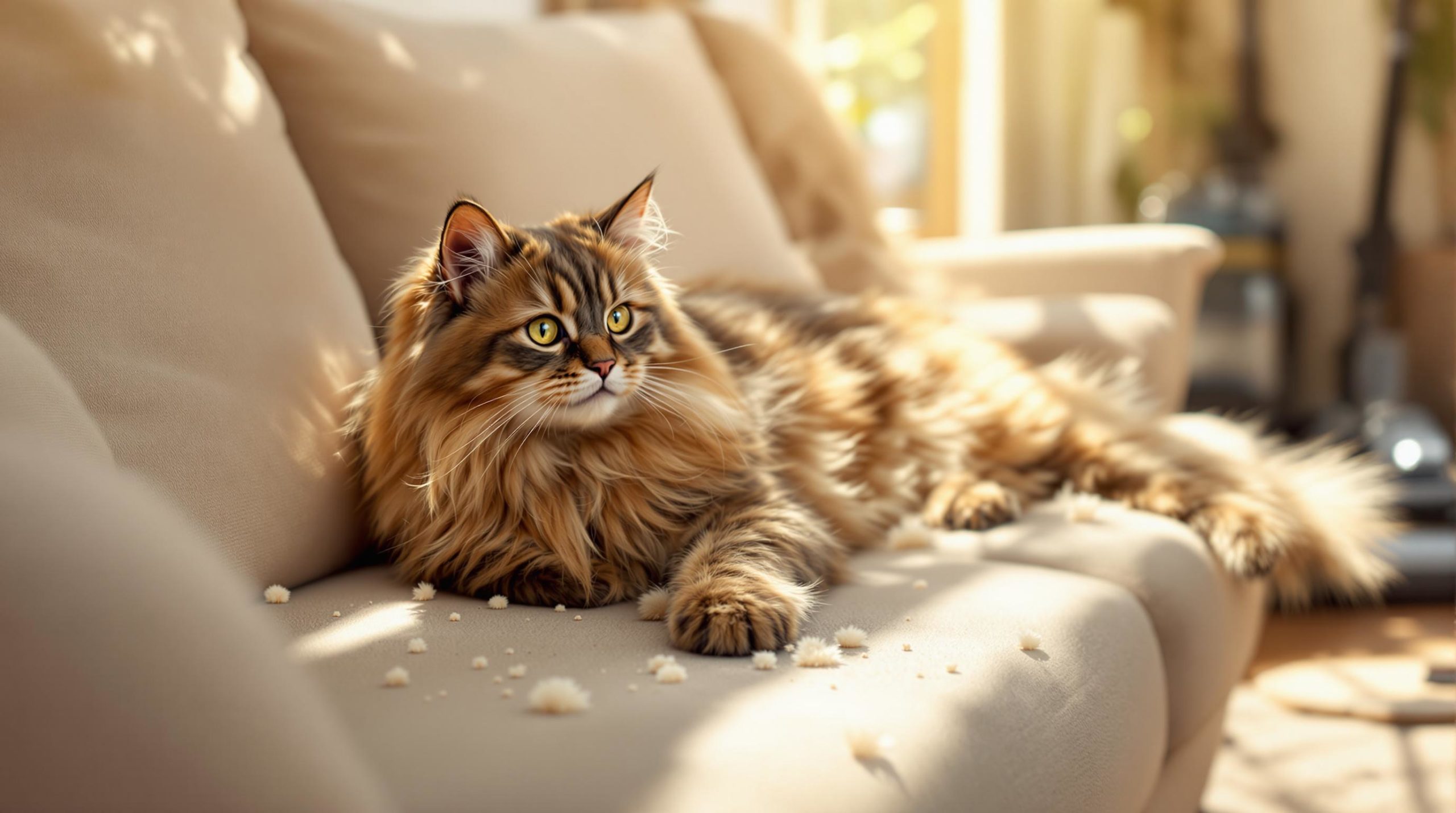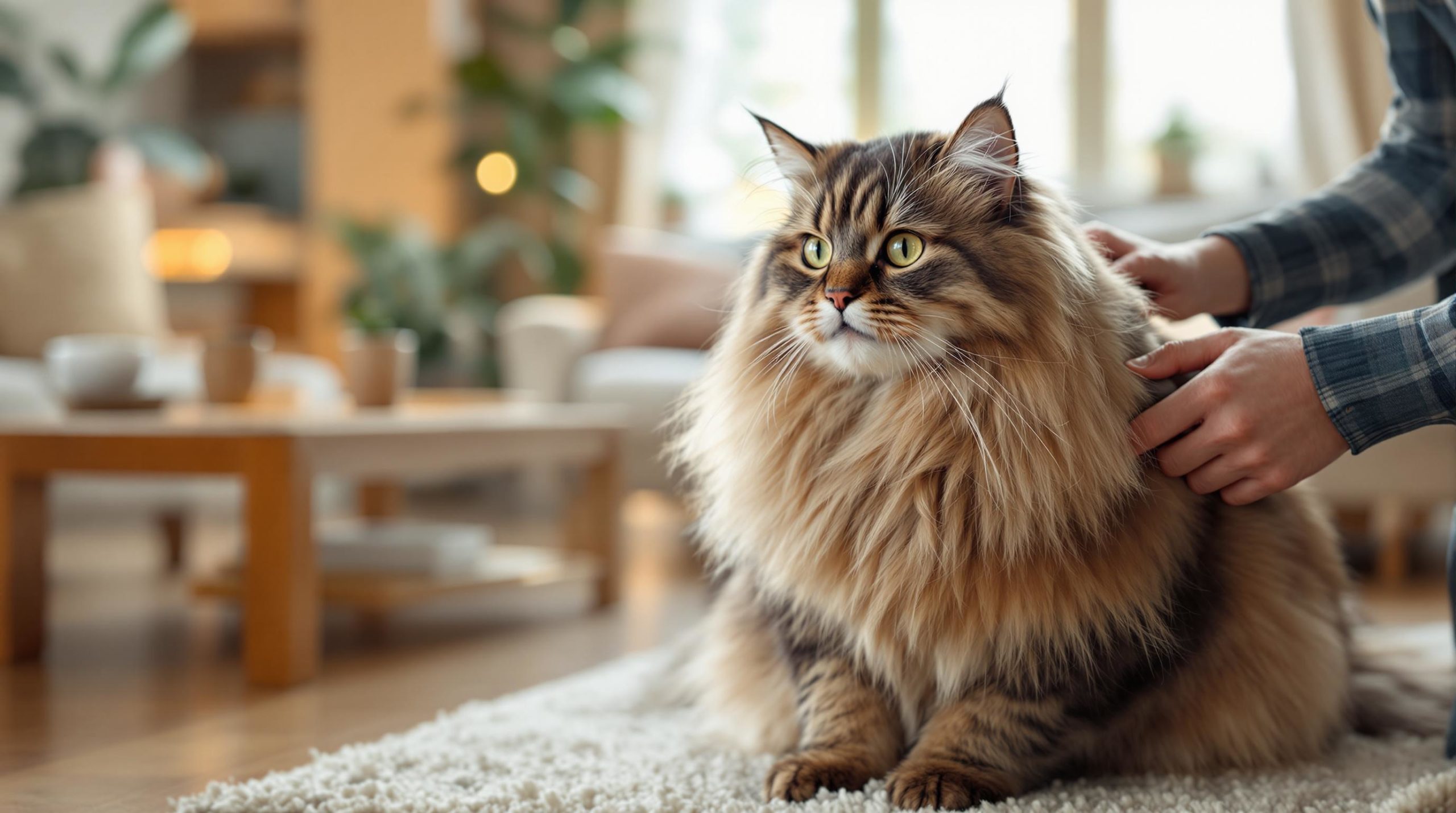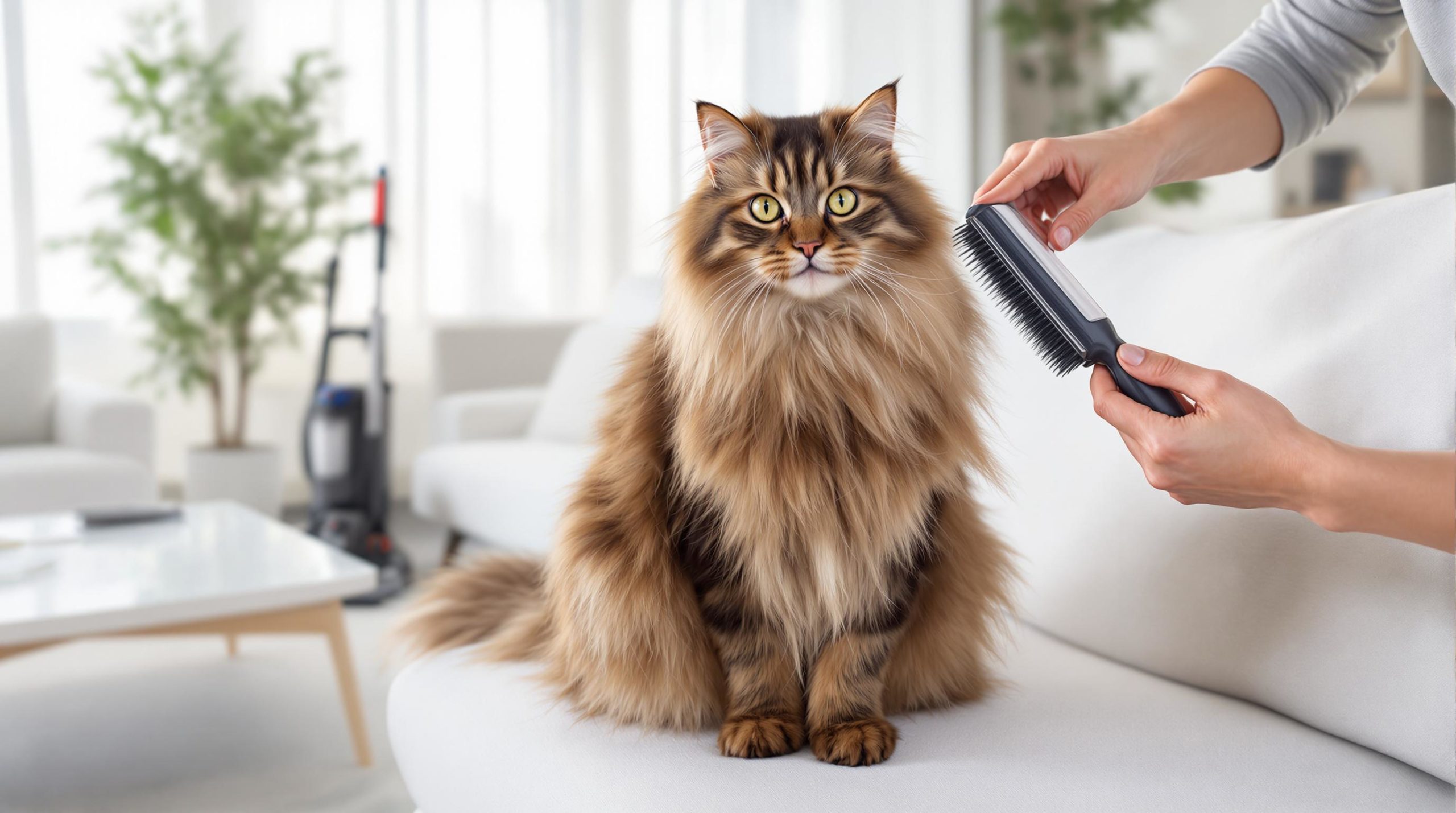exploring the reasons behind excessive shedding in your Maine Coon cat

Every cat owner knows the challenge: one minute, your Maine Coon’s coat looks majestic and fluffy; the next, you’re brushing off a thick carpet of fur from every corner. Those large, luxurious cats are famous for their dense, flowing coats, but their shedding habits can sometimes feel overwhelming. Maine Coons are built for colder climates, and their thick fur tells the story of generations adapted for harsh winters. Yet, when the shedding becomes excessive, it’s natural to wonder whether this is just a seasonal nuisance or a sign that something deeper is going on. From natural molts to health concerns, unravel the mysteries behind why your Maine Coon keeps leaving fur trails behind and discover how simple adjustments can ease the fur storm in your home.
Seasonal Shedding in Maine Coons: Understanding the Natural Cycles
Among the most common causes of excessive shedding in Maine Coons is the natural process of seasonal molting. These cats have a double-layered coat composed of a thick undercoat and longer guard hairs, perfectly designed to protect them from cold and damp conditions. As the seasons change, they shed old fur to prepare for new growth suited to the temperature shifts, which means in spring and fall, the shedding escalates dramatically.
During spring, your Maine Coon sheds its dense winter undercoat to make way for a lighter summer coat, helping it to stay cool. Conversely, when fall arrives, the cat develops a thicker undercoat to brace for the chillier months ahead. This cyclical process is an essential part of their coat maintenance and health. But the volume of fur can easily overwhelm unwary owners not prepared for the fur tumbleweeds that suddenly flock to their furniture.
How to Manage Seasonal Shedding Efficiently
- Brush regularly: Daily brushing during peak seasons with tools like an undercoat rake or a de-shedding tool can drastically reduce loose fur around your home.
- Create a grooming schedule: Consistency in grooming not only minimizes fur shedding but also decreases the chance of mats and hairballs.
- Keep your cat hydrated and healthy: Adequate water and a nutritious diet contribute to healthy skin and fur quality, helping reduce dead hair buildup.
Many Maine Coon enthusiasts turn to quality grooming brands such as Burt’s Bees for Cats and Frisco grooming tools to keep their cats’ coats in check throughout these intense shedding periods. Using the right brushes designed for a thick coat can make all the difference.

| Season | Coat Condition | Shedding Level | Grooming Recommendation |
|---|---|---|---|
| Spring | Lightening to summer coat | High | Daily brushing, undercoat rake |
| Summer | Light summer coat | Moderate | Weekly brushing |
| Fall | Growing winter undercoat | High | Daily brushing, face and belly focus |
| Winter | Thick winter coat | Low | Brushing 2-3 times a week |
Understanding typical seasonal shedding can help cat owners set expectations and avoid unnecessary worry. More on maintaining a clean and healthy coat can be found at Maine Coon Life’s grooming guide.
Effects of Diet and Nutrition on Shedding in Maine Coons
One of the lesser-appreciated reasons behind excessive shedding is the subtle but profound impact of nutrition. Like people, cats need a balanced diet rich in essential nutrients to maintain healthy skin and fur. Maine Coons, with their luxurious, thick coats, require quality protein and fatty acids to support fur growth and minimize shedding.
Commonly, a diet lacking in omega-3 and omega-6 fatty acids results in dry, brittle hair and flaky skin, triggering more pronounced shedding. Cats fed inexpensive or unbalanced food might exhibit a dull, thin coat and suffer from increased fur loss. For Maine Coon owners, investing in premium brands such as Royal Canin, Purina Pro Plan, or Hill’s Science Diet can be a game-changer when it comes to coat health.
Key Nutritional Components to Support Healthy Fur
- High-quality protein: Essential for hair follicle repair and new hair growth.
- Omega-3 and Omega-6 fatty acids: Found in fish oils, these improve skin hydration and reduce inflammation.
- Vitamin E and biotin: Antioxidants that enhance fur quality and stimulate healthy follicle function.
- Hydration: Moisture is critical not only through drinking water but sometimes enhanced via wet food options.
- Supplements: Vet-recommended supplements such as Vet’s Best skin & coat supplements can support shining coats and reduce excessive hair loss.
Nutrition isn’t a one-size-fits-all. Regularly monitoring your cat’s coat and skin is key, and a sudden uptick in shedding without other obvious causes might mean it’s time to revisit their diet. For Maine Coon diet tips and allergy-friendly recipes, check out Maine Coon allergies and diet guide and safe cooked chicken feeding tips.
| Nutrient | Function | Food Sources | Recommended Supplements |
|---|---|---|---|
| Protein | Hair follicle repair and new hair growth | Chicken, fish, turkey | None typically required if diet balanced |
| Omega-3 Fatty Acids | Improves skin hydration and reduces inflammation | Salmon oil, fish oils | Fish oil capsules, Vet’s Best skin & coat supplements |
| Vitamin E | Antioxidant promoting fur quality | Leafy greens, fortified cat foods | Multivitamin supplements |
| Biotin | Supports healthy hair follicles | Eggs, liver, certain meats | Pet-specific biotin supplements |
Taking nutrition seriously helps create a foundation that can drastically reduce unwanted shedding and keep your Maine Coon’s coat in enviable condition. For additional grooming insight and product recommendations suitable for Maine Coons, resources from PetSmart and myths about hypoallergenic traits provide excellent advice.
Understanding Stress and Environmental Factors Leading to Excessive Shedding
Stress is a silent trigger that feline caretakers often overlook when dealing with fur shedding. Maine Coons, despite their laid-back reputation, are sensitive to their surroundings. Changes such as moving homes, arrival of a new pet, loud noises, or disruptions in their routine can lead to stress-induced shedding.
In these cases, shedding acts as a physical release from anxiety – their bodies respond by losing hair in increased quantities. Stress-related fur loss may also tie into over-grooming behaviors, causing bald patches or uneven shedding areas that require prompt attention.
Ways to Alleviate Stress-Induced Shedding
- Maintain a stable environment: Minimize sudden changes and provide familiar spaces.
- Introduce calming aids: Use feline pheromone diffusers like Feliway to create soothing atmospheres.
- Create hiding and climbing spots: Provide vertical perches or quiet zones for retreat and territorial security.
- Regular play and interaction: Engaging your Maine Coon in routine play sessions reduces anxiety and builds trust.
In some instances, professional advice from a veterinarian or animal behaviorist may be warranted, especially if shedding is accompanied by other stress signs such as changes in appetite, aggression, or lethargy. For those curious about unique behavioral traits and environmental needs of Maine Coons, this resource compares Maine Coon temperaments and size for deeper understanding.
| Stress Factor | Effect on Shedding | Suggested Action |
|---|---|---|
| Change in environment | Increase in shedding, possible bald spots | Gradual introduction and stable environment |
| New pet arrival | Stress grooming and hair loss | Slow introduction and pheromone diffusers |
| Loud noises or crowding | Over-grooming, shedding patches | Provide quiet zones, vertical spaces |
Keeping an eye on your cat’s behavior and environment is crucial to managing stress-related shedding. For a more thorough look at Maine Coon behavior and environmental enrichment, readers can explore further at nurturing Maine Coon kittens and adult cats.
Medical Conditions and Parasites that Trigger Excessive Shedding in Maine Coons
When shedding becomes excessive and erratic, it’s essential not to dismiss possible underlying medical or parasite issues. Conditions such as hyperthyroidism, kidney disease, skin infections, and hormonal imbalances can dramatically accelerate fur loss. Simultaneously, parasites like fleas, mites, and ticks irritate the skin and lead to constant scratching, further harming hair follicles.
Early symptoms often include bald patches, scabs, relentless scratching, or a dull, greasy coat. In some cases, the shedding may be accompanied by other health signs like lethargy and decreased appetite, signaling that veterinary attention is necessary.
Recommended Measures to Address Health-Related Shedding
- Routine vet check-ups: Bloodwork and skin exams can detect hidden illnesses affecting coat health.
- Strict parasite control: Monthly vet-approved flea prevention treatments are vital.
- Treat infections promptly: Skin infections need specific attention with medicated shampoos or antibiotics.
- Monitor symptoms: Keep track of coat condition, behavior changes, and overall wellbeing.
For Maine Coon owners, vet visits are the key to keeping those magnificent coats thriving through regular health monitoring. More extensive details about common Maine Coon health problems appear at this healthcare resource. Furthermore, preventative care tools from trusted names like Catit and grooming sets from Maine Coon Heaven can be very helpful in the home care routine.
| Condition | Symptoms | Treatment | Impact on Shedding |
|---|---|---|---|
| Fleas and mites | Itching, scratching, hair loss | Flea prevention, vet medication | Patchy shedding, fur loss |
| Hyperthyroidism | Weight loss, increased appetite, dull coat | Medication, dietary management | Excessive shedding, thinning fur |
| Skin infections | Redness, scabs, hairless spots | Medicated baths, antibiotics | Localized shedding |
| Hormonal imbalances | Behavior changes, coat dullness | Endocrine therapy | Generalized shedding |
Practical Grooming and Environmental Tips to Keep Your Maine Coon’s Shedding in Check
Maintaining a Maine Coon’s gorgeous coat requires regular, dedicated grooming and home care strategies that don’t just address fur loss but support overall skin health. Regular brushing, bathing, and keeping your living environment controlled can make shedding manageable and less overwhelming.
Tips for Routine Grooming and Shedding Prevention
- Use specific brushing tools: Slicker brushes, metal combs, and undercoat rakes help detangle fur and remove loose hair.
- Schedule bathing sessions: Bathing your Maine Coon every 4-8 weeks using cat-safe shampoos from brands like Burt’s Bees for Cats eliminates oils and dander buildup.
- Maintain humidity levels: Indoor heaters dry out skin, so using humidifiers can reduce flaky skin and shedding.
- Keep pet areas clean: Frequent vacuuming with a HEPA filter vacuum and lint rollers prevent fur accumulation on furniture and clothes.
- Hydrate with water fountains: Cats often prefer flowing water, encouraging hydration that supports healthy skin.
Incorporating these simple routines can drastically reduce the fuzz gathering in your home and promote a well-coiffed appearance. For deeper dives into grooming step-by-step and product links, Maine Coon Life offers excellent resources.
| Grooming Tool | Purpose | Recommended Frequency | Suggested Brands |
|---|---|---|---|
| Undercoat rake | Remove loose undercoat hair | Daily in heavy shedding seasons | Burt’s Bees for Cats, Frisco |
| Slicker brush | Detangles fur and smooths coat | 2-3 times a week | Frisco, Vet’s Best |
| Cat-safe shampoo | Removes oils and dander, skin cleansing | Every 4-8 weeks | Burt’s Bees for Cats, PetSmart selections |
| Lint rollers/vacuum | Home fur removal | As needed | Catit, Frisco |

Frequently Asked Questions About Maine Coon Shedding
- Q: Is excessive shedding normal in Maine Coons?
A: Excessive shedding can occur seasonally and due to various factors such as diet, stress, or health issues. Monitoring changes and consulting a vet if concerned is advised. - Q: How often should I groom my Maine Coon?
A: Ideally, brush daily during heavy shedding seasons and at least 2-3 times a week during other periods to prevent mats and hairballs. - Q: Can allergies increase shedding in Maine Coons?
A: Yes, food or environmental allergies cause itchiness leading to over-grooming and fur loss. Hypoallergenic diets or allergy tests might help. - Q: Are Maine Coons hypoallergenic due to their thick fur?
A: Despite myths, Maine Coons are not hypoallergenic. Their dense coats can trap allergens and shed large amounts of fur and dander. More details at Maine Coon Hypoallergenic Myths. - Q: When should I seek veterinary help for shedding?
A: Look out for bald patches, persistent itching, a dull coat, or behavioral changes and consult your vet promptly.